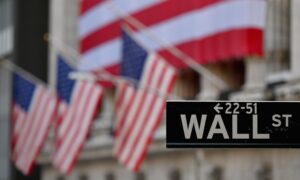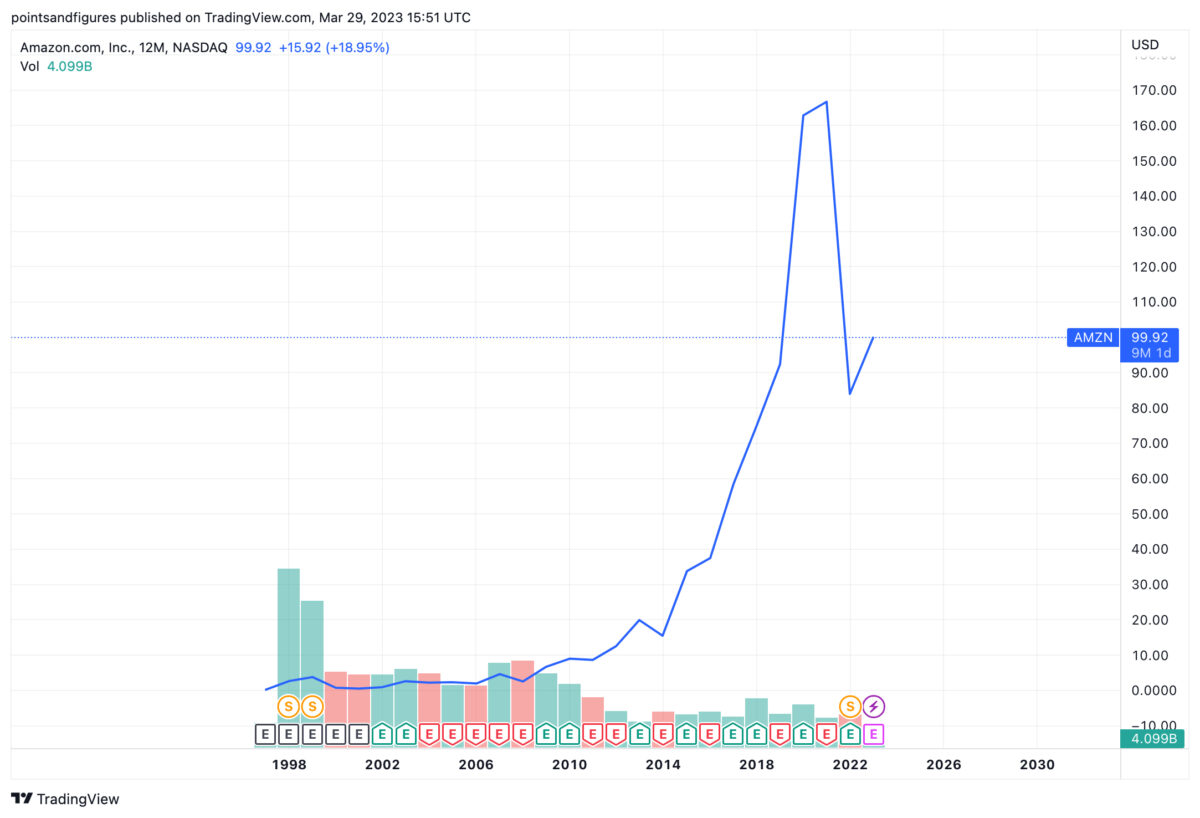Is America Still a Capitalist Society? The Case for Letting the Market Speak
Commentary In theory, America is a capitalistic society. One beautiful part about capitalism is that everyone gets to participate. If you create value, you get rewarded for it. If you invent something new and create a lot of value, you get rewarded handsomely for your effort. However, the flip side of living in a capitalistic society is that there is failure. Not everyone is successful. Not everyone gets the brass ring. They don’t get rewarded even when they seemingly do the right things by getting the right degree and working hard. However, that’s usually because they aren’t creating unique value not found anywhere else. Cogs in machines don’t get rewarded. Looking to the classic dictionary definition of capitalism, it says this: An economic system characterized by private or corporate ownership of capital goods, by investments that are determined by private decision, and by prices, production, and the distribution of goods that are determined mainly by competition in a free market. Based on what has happened over the past couple of weeks in America’s banking system, do we have capitalism or not? One of the worst outcomes from the financial crisis of 2008–09 was the federal government bailout of the banks. Paraphrasing deceased Supreme Court Justice Louis D. Brandeis, bankruptcy is a great disinfectant. Going through the process of bankruptcy is essential to capitalism because instead of a centralized bureaucracy or entity deciding the fate of a failed enterprise, the market decides. If the banks would have gone into bankruptcy back in 2008, it would have been rough sledding for the U.S. economy until it worked itself out. But, the market would have spoken. Assets would have been bought and sold. Risk-taking equity shareholders and some debt holders would have been wiped out. However, America’s banking system would be better for it and sounder today than it is. Bankers would have been forced to relearn the lessons of risk that they conveniently forgot in both the 2008 crisis and in the recent wipeout of Silicon Valley Bank. It turns out, there might be another crisis looming in the regional banking sector and the Federal Reserve stands ready to bail them out again. This looming crisis isn’t simply because deposits increased greatly during COVID-19 and bankers didn’t hedge. There is a coming commercial real estate loan crisis in the next couple of years, and the primary lenders to those commercial real estate developers are regional bankers. Of course, because that information is public, it should be priced into today’s market prices. The Fed should stand down and let the market work. Instead, as Treasury Secretary Janet Yellen testified in her answer to Sen. James Lankford (R-Ok.), the federal government is arriving at decisions of whom to bailout based on politics. Yesterday, Fed official Michael Barr testified that the Fed did nothing wrong in the lead up to the bailout and in the bailout. Supposedly, Dodd-Frank was going to regulate banks more aggressively so we wouldn’t see bank failures on the scale of Silicon Valley Bank. However, because the government didn’t let the market speak back in 2008, we have parallel problems today and we will in the future. More regulation or “better regulation” or “targeted regulation” isn’t going to fix or stop anything. A bank and its shareholders winding their way through bankruptcy court will. By the way, contrary to much of what you might have been told or read, the entire 2008 banking crisis was not only a failure of banks to ascertain risks. The crisis was seeded in terrible government policy which incentivized the entire banking sector to take risks it otherwise would have shied away from. Without the government programs, the crisis never happens. The more the government intervenes, the more political the decisions and outcomes become. Markets are amazingly flexible things. They take all public information and expectations of the future and derive a price today that you can see. That price influences supply and demand behavior and as information and expectations change, the price changes. A great example of that is Amazon stock. Amazon went public in 1997 for $30 per share, split adjusted to $0.30 per share in the chart below, at an enterprise value of $437 million. Amazon saw its shares rise in the great tech run up from 1997–2001, hitting a high of $186.12 on July 8, 2001. The wheels fell off of the tech market and dragged Amazon down with it. Here is a stock split-adjusted chart on Amazon stock for its entire history. You can see where Amazon stock dropped in 2001 due to the drop in the line. If you look at 2008, you will see a similar negative slope on the line as stocks dropped again. But, what happened over time? Amazon proved it had a big business and market expectations rose tremendously, lifting the stock price. What happened in 2001? There were rampant expectations on the future of the internet that were way ahead of themselves. Invest

Commentary
In theory, America is a capitalistic society. One beautiful part about capitalism is that everyone gets to participate. If you create value, you get rewarded for it. If you invent something new and create a lot of value, you get rewarded handsomely for your effort. However, the flip side of living in a capitalistic society is that there is failure. Not everyone is successful. Not everyone gets the brass ring. They don’t get rewarded even when they seemingly do the right things by getting the right degree and working hard. However, that’s usually because they aren’t creating unique value not found anywhere else. Cogs in machines don’t get rewarded.
Looking to the classic dictionary definition of capitalism, it says this: An economic system characterized by private or corporate ownership of capital goods, by investments that are determined by private decision, and by prices, production, and the distribution of goods that are determined mainly by competition in a free market. Based on what has happened over the past couple of weeks in America’s banking system, do we have capitalism or not?
One of the worst outcomes from the financial crisis of 2008–09 was the federal government bailout of the banks. Paraphrasing deceased Supreme Court Justice Louis D. Brandeis, bankruptcy is a great disinfectant. Going through the process of bankruptcy is essential to capitalism because instead of a centralized bureaucracy or entity deciding the fate of a failed enterprise, the market decides. If the banks would have gone into bankruptcy back in 2008, it would have been rough sledding for the U.S. economy until it worked itself out. But, the market would have spoken. Assets would have been bought and sold. Risk-taking equity shareholders and some debt holders would have been wiped out.
However, America’s banking system would be better for it and sounder today than it is. Bankers would have been forced to relearn the lessons of risk that they conveniently forgot in both the 2008 crisis and in the recent wipeout of Silicon Valley Bank. It turns out, there might be another crisis looming in the regional banking sector and the Federal Reserve stands ready to bail them out again. This looming crisis isn’t simply because deposits increased greatly during COVID-19 and bankers didn’t hedge. There is a coming commercial real estate loan crisis in the next couple of years, and the primary lenders to those commercial real estate developers are regional bankers. Of course, because that information is public, it should be priced into today’s market prices.
The Fed should stand down and let the market work. Instead, as Treasury Secretary Janet Yellen testified in her answer to Sen. James Lankford (R-Ok.), the federal government is arriving at decisions of whom to bailout based on politics. Yesterday, Fed official Michael Barr testified that the Fed did nothing wrong in the lead up to the bailout and in the bailout. Supposedly, Dodd-Frank was going to regulate banks more aggressively so we wouldn’t see bank failures on the scale of Silicon Valley Bank. However, because the government didn’t let the market speak back in 2008, we have parallel problems today and we will in the future. More regulation or “better regulation” or “targeted regulation” isn’t going to fix or stop anything. A bank and its shareholders winding their way through bankruptcy court will.
By the way, contrary to much of what you might have been told or read, the entire 2008 banking crisis was not only a failure of banks to ascertain risks. The crisis was seeded in terrible government policy which incentivized the entire banking sector to take risks it otherwise would have shied away from. Without the government programs, the crisis never happens. The more the government intervenes, the more political the decisions and outcomes become.
Markets are amazingly flexible things. They take all public information and expectations of the future and derive a price today that you can see. That price influences supply and demand behavior and as information and expectations change, the price changes. A great example of that is Amazon stock. Amazon went public in 1997 for $30 per share, split adjusted to $0.30 per share in the chart below, at an enterprise value of $437 million. Amazon saw its shares rise in the great tech run up from 1997–2001, hitting a high of $186.12 on July 8, 2001. The wheels fell off of the tech market and dragged Amazon down with it. Here is a stock split-adjusted chart on Amazon stock for its entire history. You can see where Amazon stock dropped in 2001 due to the drop in the line. If you look at 2008, you will see a similar negative slope on the line as stocks dropped again. But, what happened over time? Amazon proved it had a big business and market expectations rose tremendously, lifting the stock price.

What happened in 2001? There were rampant expectations on the future of the internet that were way ahead of themselves. Investors were single-minded and got themselves in a lather. Once the bubble burst on those expectations, the market repriced every internet stock and they all dropped. The words “dot com” became a derogatory term. The government stayed out of the market action. There were no bailouts for internet companies that went broke. Shareholders lost money. It goes without saying that smart investors sifted through the rubble of 2001 and bought some stocks earning them a lot of money for assuming that sort of risk.
One of the fundamental parts of a capitalistic system is that there are failures. Creative destruction happens. People try and fail and try again. Through competition, capitalism forces the best ideas to the top. As a society we all benefit. America has been the most innovative place in the world because of capitalism. America’s standard of living is the highest in the history of the world because of capitalism, not government policies or government bailouts. When failure happens, we accept the responsibility for it and we move on. Thomas Edison didn’t create the light bulb on the first try, and when he failed, he didn’t run to Congress for a bailout. He did the work himself. Capitalism walks hand in hand with our constitutional system that puts the rights of an individual above government. With the upside of those systems comes downsides, and if we want upsides, we have to tolerate the downsides and accept responsibility for them.
That’s the lesson that should be taught. Except, it isn’t.
Views expressed in this article are the opinions of the author and do not necessarily reflect the views of The Epoch Times.












